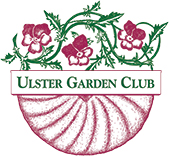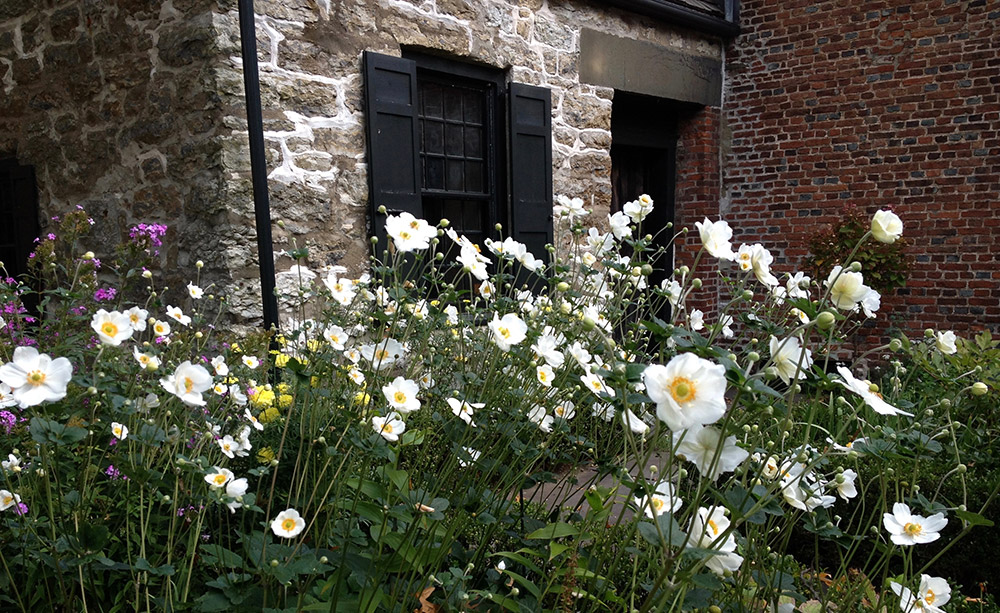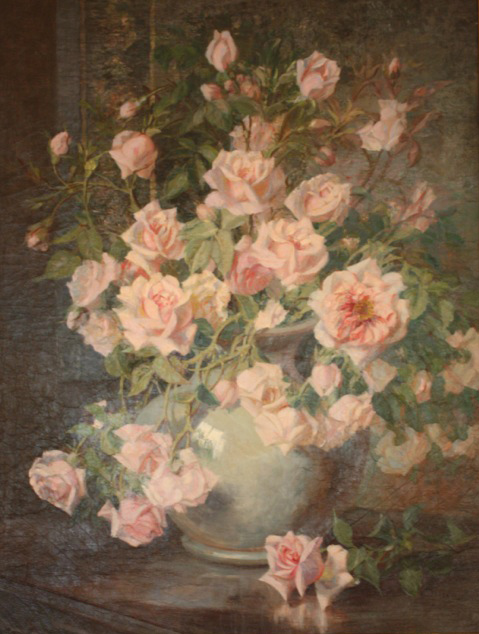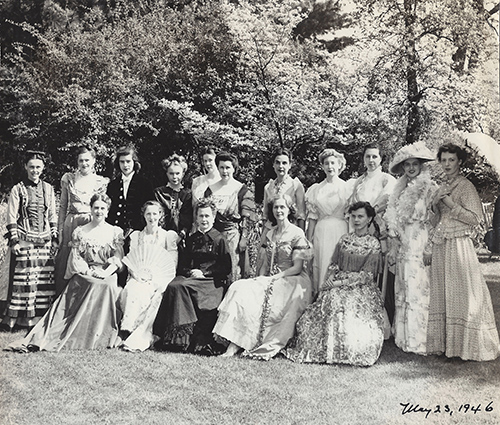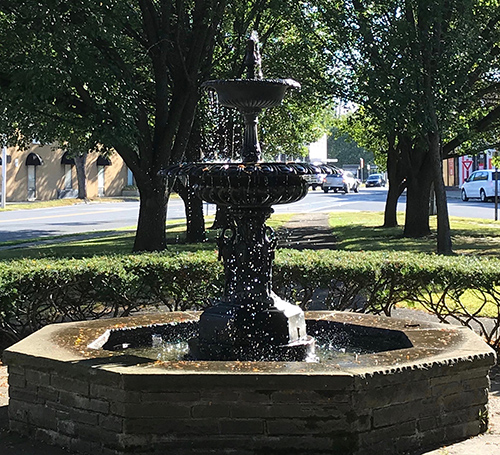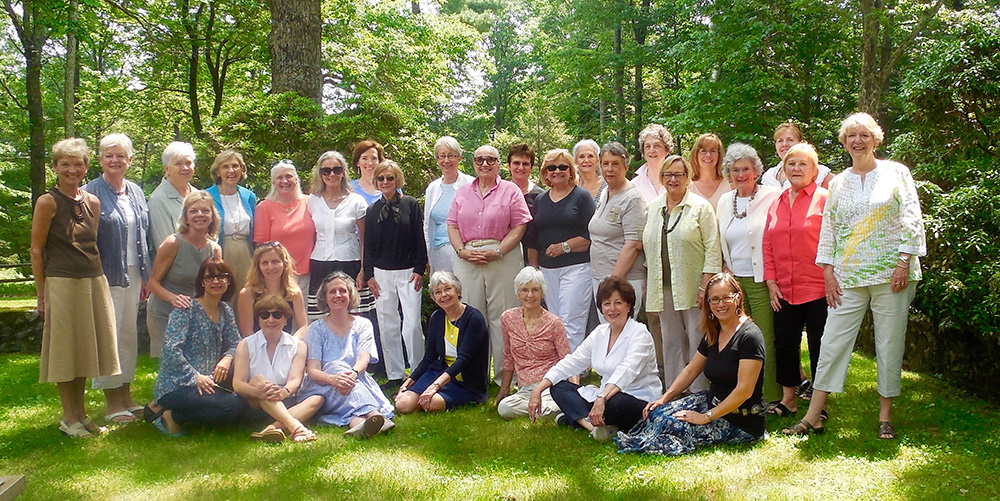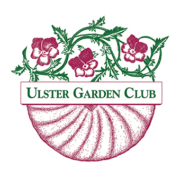Our History
ULSTER GARDEN CLUB 1914 – 2021
On July 14, 1914, a group of women met at the Manor House in Kingston to form a club devoted to gardens, education and civic improvement. These women may have been wearing elegant hats and white gloves; they may have been sipping tea and nibbling politely on tiny, trimmed sandwiches; but there was nothing “delicate” about them. They were actually early environmental activists. They formed the Ulster Garden Club and declared that the club’s mission should be to “stimulate the knowledge and love of gardening and creative flower arranging; to share in the advantages of association by means of educational meetings; and to restore, improve, and protect the environment through programs and action in the fields of conservation and civic improvement.”
For the past 100 years, the Ulster Garden Club, with few exceptions, has met monthly to carry out that mission. There have been many accomplishments:
Early Years
The first official business of the Ulster Garden Club in 1914 was to name Julia Dillon the Honorary President of the Club. The Kingston-born artist was the first cousin of well-known Hudson River School painter, Jervis McEntee. She was trained in the ateliers of Paris but also ran a foundry and was a devoted community activist.
The Ulster Garden Club became a member of the Garden Club of America in 1915.
In 1916, Club members were appointed by the “Trustees of the Old Senate House” to restore the gardens at the Senate House State Historic Site in Kingston.
In the early 1920s, Club members engaged Pennington Studios, one of Kingston’s most prestigious photographic studios, to photograph their home gardens. The resulting glass lantern slides, many of which were hand-painted, were used for public educational programs. The collection is now a part of the Smithsonian’s Archives of American Gardens.
The Club hosted a ball in 1924 to raise money for the beautification of Academy Green Park, thus beginning the Club’s longstanding stewardship of the park. Many trees were planted on the site, including a magnolia and a Washington elm.
Mid-Twentieth Century
In 1946, the Club hosted a “Victorian Tea” to raise funds for the garden at the Senate House Museum. Herbert Cutler, landscape designer and member of the Club, designed the formal boxwood garden that opened in 1950.
1964 brought a very special honor when the Club received the coveted Garden Club of America Founders Fund Award, a monetary prize used towards further improvements to the Senate House Garden.
The 1950s and 1960s were not kind to street trees: fast-spreading chestnut blight, Dutch elm disease, the pressures of road widening, and electric line installation signaled a dire need for action. The Club responded by creating a fund for planting street trees in the City of Kingston, and by the early 1970s, that fund had blossomed into The Memorial Tree Fund, a not-for-profit organization with the ongoing mission of cultivating, fostering and promoting interest in the planting and care of trees.
Late Twentieth Century
In 1974, with thanks to Friends of Historic Kingston which bought the property surrounding the Louw-Bogardus House ruin on Frog Alley, the Club was able to turn the property into a charming park as a Bicentennial project. The property was graded, a bluestone terrace was laid, trees were planted and benches provided. Red, white and blue bulbs were planted to bloom in the spring of 1976 for the opening of the park.
In 1980, the Club joined with the City, Kingston Trust, Friends of Historic Kingston and the Board of Trustees of Kingston Academy to begin a two-year project to landscape Academy Green Park. The project included the planting of Bradford pears and an allee of dawn redwood trees, the laying of bluestone, and the installation of a cast-iron fountain, creating the classic appearance of the park today. The fountain, which had been purchased in 1873 by Edward Tompkins for his garden in the Rondout/Ponckhockie section of Kingston, had been stored in a barn for decades but found a new home in the park.
During the 1980s, the Memorial Tree Fund, with the guidance of the Ulster Cooperative Extension Service, compiled a Survey of City Trees with the purpose of encouraging the City of Kingston to enact a “Street Tree Ordinance.” By 1990, the Fund had planted over 1,000 street trees in the City. And in 1995, the City adopted a tree ordinance and created a Tree Commission.
Twenty-First Century
In 2005, the Club co-sponsored an exhibit of Julia Dillon’s sumptuous paintings of flower arrangements at the Friends of Historic Kingston Museum, and in 2011, donated a beautiful Dillon canvas of chrysanthemums to the museum.
In 2009, artist and environmentalist Maya Lin created an earthwork sculpture, Storm King Wavefield, at the 500-acre outdoor museum in Cornwall, NY. This wondrous sculpture consists of seven grass-covered, four-hundred-foot long “waves”. An integral part of Ms. Lin’s concept was to address the environmental impact of creating her sculpture, and the Ulster Garden Club was pleased to help. The Club, with additional funding from the Garden Club of America, donated the funds to plant approximately 50 native trees on a hill overlooking the Wavefield to offset the carbon footprint generated by production of the work.
Through a bequest from Betty Gross, a long-standing member, an annual horticulture lecture series was established by the Club at SUNY Ulster in 2011. A diverse group of speakers has been brought to our community for the event, which is free and open to the public, including: native landscape architect, Darrel Morrison; Founder and President of the Untermyer Gardens Conservancy, Stephen Byrns; Director of NYBG Nolen Greenhouse for Living Collections, Mark Hachadourian; and ethonobotonist Dr. Paul Alan Cox.
The Club celebrated its Centennial in 2014. In honor of that milestone, the Club embarked on several major projects:
- The Senate House Garden was enhanced: surrounding hemlocks were trimmed; a pair of traditional “tuteurs” were installed; and a variety of perennials and annuals were planted for a glorious display of color, texture and fragrance from spring until autumn;
- A Centennial Orchard was planted at Forsyth Park to provide a burst of flowers each spring and fruit to feed zoo animals in the fall;
- A newly landscaped entrance leading to the Bevier House, home of the Ulster County Historical Society, was funded in part by the Club; and
- An annual scholarship was established at SUNY Ulster to support a student who plans to continue their education in the field of horticulture or environmental studies.
In 2016, the fountain at Academy Green, showing its age, broke beyond repair. The Ulster Garden Club and a private donor purchased a new fountain for the park, which was installed in 2017.
Today
The Club’s Academy Green Committee keeps a watchful eye on the park and continues to maintain a steady presence by watering trees, pruning hedges and maintaining the fountain.
The Memorial Tree Fund remains dedicated to planting trees that will be enjoyed for generations to come. The Fund has also hired arborists to prune or remove ailing trees in public spaces, including Forsyth Nature Center, SUNY Ulster campus, Academy Green, historic Sharp Burial Ground, Senate House grounds, and Frog Alley Park.
The Senate House Garden has slowly evolved from a basic, colonial style into a show garden. The grounds, once a ruin, have since become the centerpiece of the historic district, a joy and a visitor magnet. Most Tuesday mornings Club members can be found, digging, trimming, planting and weeding.
Times and styles have changed considerably since 1914. Fancy hats and dressy white gloves may have given way to protective sunhats and sturdy and practical garden gloves, but the focus of the Club has remained constant: gardening, education, civic improvement and the environment.
The Ulster Garden Club is a not-for-profit 501(c)(3).
The Memorial Tree Fund is a not-for-profit 501(c)(3), which depends on public support. Tax-deductible donation may be sent to: The Memorial Tree Fund, Inc., P.O. Box 2623, Kingston, NY 12402-2623.
